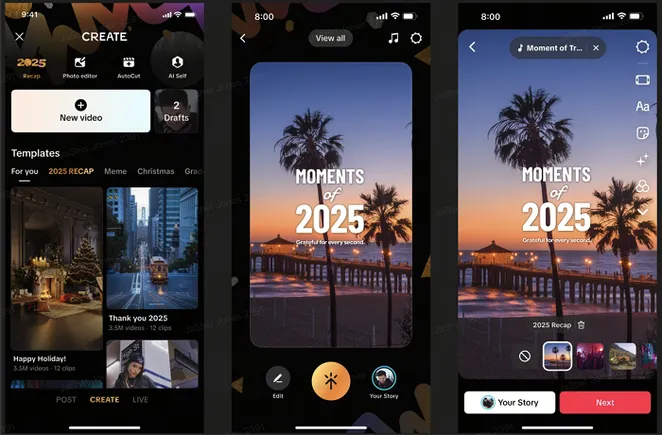How to use buyer journey keyword research to unlock SEO-generated revenue
I know the impact of ignoring buyer’s journey keywords all too well. Early in my SEO career, I generated two million clicks for an ecommerce store. The client and I were thrilled. The graph on Google Search Console was...

I know the impact of ignoring buyer’s journey keywords all too well. Early in my SEO career, I generated two million clicks for an ecommerce store. The client and I were thrilled. The graph on Google Search Console was trending strongly up. The problem? I couldn’t quantify a single sale from two million visitors. I had no idea how to generate a keyword strategy for buyers. I learned my lesson the hard way. Now, everything I do in SEO is centered around the buyer and the end goal: a sale. Using buyer journey keywords, I can better quantify the value of my work. I know which landing page converts and which keywords influence sales, and I can quantify the monetary contribution articles had on sales. Keep reading to learn how. Table of Contents The buyer’s journey includes the steps a potential buyer will take before they purchase. SEOs who want to serve buyers and sell products or services need to understand the buyer journey to effectively strategize content. Generally, the buyer journey will have three stages: Sometimes, it’s represented in a funnel, known as the marketing or conversion funnel. I’ve placed an image of one below. You may also know these stages as: Understanding buyer’s journey keywords will pivot your SEO strategy from clicks to revenue, which matters for every business. Google is serving more of your potential buyers with AI overviews, which appear in 47% of results. Now, people can just read the AIO without clicking a link. So, SEOs must be tactical to win clicks and conversions. Each buyer journey stage has a separate need that you need to meet by matching the right keywords to the right stage. Meeting the buyer at different stages on their journey isn’t always about sealing the deal but building relationships. In the State of Marketing survey, HubSpot found that marketers believe that building connections across the buyer’s journey and developing relationships at scale introduces new operational needs. The buyer has identified a problem but doesn’t fully understand it or doesn’t know a solution exists. They are seeking general information or education to clarify the issue. This stage is about discovery and research. This stage of the buyer journey needs helpful, educational content to better understand the problem or opportunity. Keywords for this buyer journey will be problem-based and question-driven, such as “how to,” “why does,” or “what is.” These terms align with the buyer’s intent to learn and explore their situation without feeling sold to. Consider that a buyer in the awareness stage is using keywords about a problem. For example, a sales manager might research: During this stage, content wants to educate the buyer. While this top-of-funnel content might not seem the most impactful for sales, according to Hubspot’s State of Marketing survey, the website and blog are some of the most effective channels for ROI. The buyer understands the problem and is exploring different approaches or solutions. They are actively researching options and comparing them. This stage of the buyer journey needs solutions and guidance on which route might be best for them. Keywords for this buyer journey will be comparison and solution-oriented keywords like “best tools for,” “top strategies,” “[solution] versus [solution]” or “solution to [problem].” These help your content show up when the buyer is evaluating ways to solve their issue. Let’s stick with the example of a buyer looking for a CRM. In the consideration stage, they will know what their options are, and they might be overwhelmed. They are looking for support and want help weighing up solutions. The buyer is ready to make a decision and take action. They’ve narrowed down their options and are looking for reassurance, offers, or reasons to choose your product or service. This stage of the buyer journey needs to reassure the buyer’s confidence in your solution and make conversion easy and tempting. Keywords for this buyer journey will be targeted, intent-driven keywords like “buy,” “get a quote,” “pricing,” or “[product/service] near me.” These align with transactional searches and indicate the buyer is close to making a purchase. If looking for a CRM, the buyer is ready to click “Start Free Trial.” The key things to understand are: Now you understand the context of the buyer journey, each phase, and some ideas of keywords, I’ll walk you through a step-by-step process of how I do keyword research for each stage of the buyer’s journey. When doing keyword research, it’s tempting to start from the top with the awareness stage, but I reverse this process and start at the bottom buyer journey stage, conversion. I start with conversion for two main reasons: Stick with me as I share the complete guide. I love to record my buyer journey keyword strategy on Google Sheets. For now, you don’t need to do anything fancy. Simply set up a document and save it somewhere safe. You will use this document to import all your keyword research. There are many ways to gather bottom-funnel keywords. If you have a strong and well-managed ads account, start there. To find keywords that convert, follow these steps: The screenshot above shows a redacted Ads account for one of my clients. It shows the steps you take to find the keywords. I want to note that not all keywords in the ads account work. The highest-converting keyword is excluded because although it received conversions, it didn’t get sales. The ads manager excluded this keyword, so SEO should likely exclude it, too. Top tip: Many of the highest-converting keywords will include your brand name. You will be ranking for these anyway, so don’t focus on them. Choose keywords that you need to work on to increase rankings. SEO tools such as Semrush offer insights into keywords, volumes, and intent. There are many on the market, but my favorite is Semrush, so I’ll demonstrate this stage using Semrush’s Keyword Magic Tool. On your chosen keyword research tool, add your head keyword. Your head keyword will be the product or service you are selling. For this example, I’ve chosen “CRM.” Many keyword research tools allow you to filter results, including “transactional” keywords, which are likely to convert. You need to: Top tip: Don’t worry too much about search volume and keyword difficulty. Generally, conversion keywords are the most difficult to rank for and often have lower search volumes. Remember the funnel from earlier? The smallest section is at the bottom, as users at this point in the buyer journey reduce. Google Search Console is not the easiest way of identifying buyer journey keywords, but it is free, so I’ve included it. To determine whether a keyword is helping you make sales, you need to understand how users engage with the pages the keyword drives traffic to. First, let’s find pages that convert. Take your highest-performing pages and analyze the URL in Google Search Console (GSC). GSC will filter all keywords generating clicks for the page input. Review the keywords and identify if keywords are likely to result in a sale. Top tip: Google Search Console won’t tell you which keywords are converting, so you’ll need to use some common sense. From the stage above, you should have a list of keywords that you’d love to rank for. These are your bottom-funnel or conversion keywords. Generally, these keywords are used on: Later, I’ll discuss keyword mapping so you know exactly where to place your keywords. Before creating more content, though, I like to ensure I have the content available to support bottom-funnel pages in a way that builds E-E-A-T. I like to start with the next most important item, which is content that fits the middle-funnel buyer's journey: Consideration. The type of content we can use for keyword research includes: You likely already have these pages on your website. I might take these pages and put them into Google Search Console to see if I can find any relevant keywords. To do this, use the steps above for keyword research and filter by page. Important note: Your review keywords are really important and often missed by brands. I see too many websites that lack a review page and therefore give clicks away to review sites or even social media. You want a page on your website that showcases your reviews and manages your brand narrative. Top tip: If you don’t find much in terms of keywords and search volume, don’t worry too much. Not every piece of content for the buyer journey has to be for SEO. Some content can be shared with other marketing departments via email, for example. Finally, I identify keywords for the awareness buyer journey stage. Visualize the funnel from earlier. The funnel shape provides a visual for the traffic volumes at each stage of the buyer journey. Awareness is at the largest point of the funnel because it has the most searches, keywords, and users. As you get further down the funnel, it narrows because the audience gets smaller. To do keyword research for this phase, I go back to Semrush, following the steps above, and navigate to the Keyword Magic Tool. I remove filters for the intent and look at Questions as well as keywords to see which keywords inspire content. Important note: The tools do a fantastic job of providing keyword inspiration, but there is no replacement for talking to customers and your peers. Ask sales what types of questions people ask. Find out exactly who your target audience is and what they need from you. It’s very easy to get distracted at this stage. You must create content that your audience needs. Creating the right content and targeting the keywords your audience needs has never been more important. With the rise of AI, top-funnel keywords get far fewer clicks as AI overviews serve the buyer. You need every click to count. These next two steps are my favorites. You might already have an idea of where you're going to use your keywords. Bottom-funnel keywords are generally pretty self-explanatory. “Demo CRM,” for example, clearly needs to go to a page where a CRM can be demoed. Many keywords won’t be as self-explanatory, though. I like to use Google in private browsing, so the search engine results pages (SERPs) are not tailored to my usual search history. Let’s Google “best CRM for sales and marketing teams,” and I’ll show you how I analyze the SERPs. Here’s what I’m thinking when I look at these SERPs: From this information, you can gather: What you’re doing here is using Google’s “understanding” of the searcher’s needs to determine what they want and what you’ll create to meet it. Google has a complex algorithm dedicated to providing helpful content to its users. Google’s success in being helpful and providing quality information is paramount to its success as a search engine. It’s fairly safe to assume Google has search intent right. Mimic the content Google is prioritizing (but do it in your own way), and you’ll likely meet user needs. As an extension of the step above, correctly map buyer journey keywords to the right content. This is called keyword mapping. You assign keywords to the page that have the highest possible chance of ranking. Once you’ve done the first step, you need to correctly identify your supporting keywords. A good example to illustrate this point is People Also Ask. I often see websites that see each FAQ as its own page or article, but this isn’t always the most efficient way to map keywords. For the search “road bike for women,” People Also Ask provides the following questions: It would be a mistake to use the keywords “What is the best road bike for ladies?” and “Which bike is best for females?” as keywords for the same article. You can see this in your SERP analysis. When Googled, you can see the ranking articles. There is one commonality, but the rest of the articles are different. The keyword “What is the best road bike for ladies?” is more nuanced, bringing up results that mention “road,” whereas the other keyword is more general. Important note: Although this search is an excellent guide, sometimes you need to use common sense and do what is right by your values and business. For example, if you only sell road bikes, you might choose to cluster those keywords together. I like to record my buyer journey keyword map in Google Sheets. Here’s what my sheet looks like: I record a draft title, the page's focus keyword, and supporting keywords. This way, when I write the content, I know where the keywords are mapped. If you want more support with SEO content writing, HubSpot's SEO Marketing Software allows you to optimize your content within one easy-to-use-tool. Finally, here are some final tips to help you feel confident about keyword research aligned with the buyer journey. This tip is easy to implement, especially in B2B, because the person on the other end of the phone likely understands. If you work in marketing, there’s a good chance the buyer will also respect your diligence. Once you've built a good rapport with the prospect, ask them what they searched for to find you. This information will give you exactly the type of keyword your buyers are searching for. If you follow my process for buyer journey keyword research detailed above, you’ll do this, but I can’t stress enough the importance of starting with buyer needs. It’s very tempting to go to the tools and start finding keywords, but you really want to hone in on conversions and scale back from there, discovering impactful keywords that actually help your buyer. No one knows your customers like sales and customer service. Ask them which questions buyers ask frequently and what you can do in content to address common apprehensions and build trust. Although keywords and SEO are incredibly important, it takes time to rank in the top spots of Google. In the meantime, get content out to your users through other means: ads, emails, social media, etc. Google Search Console (GSC) data updates frequently. Keep a close eye on keywords you search, clicks, and impressions. Look for new opportunities to add more keywords to your content. I like to look at high impressions and low clicks to spot keywords people are searching for. Sometimes, you’ll encounter a keyword map or SERP analysis that doesn’t quite feel right. You should always do what’s right for your buyer and business. I always say that you should do the integral thing first. You might be surprised at what you can rank, even if the SERPs aren’t quite in line with what you want to create. You can always come back and compromise later. SEO is notorious for being tricky in tracking its contribution to sales. It’s not like ads where you have keywords with sales assigned. Instead, you can only really assign click quantities. However, there is a major benefit to buyer journey keywords: you know that not everything is created to convert. Some keywords are used on pages that convert, and others are there to build awareness. This means you can alter your tracking accordingly. Since using buyer journey keywords and building a strategy from the bottom-funnel keyword, I’ve felt much happier with my SEO. Upward trending graphs are still deeply fulfilling and exciting, but the benefit of generating revenue (and being able to prove it) is far superior.The Role of the Buyer's Journey in Keyword Research


Keyword Intents for Each Buyer's Journey Stage
Awareness
Here’s an example of a buyer in the awareness stage and the keywords to support them.
Consideration
Here’s an example of a buyer in the consideration stage and the keywords to support them.
Conversion
Here’s an example of a buyer in the conversion stage.

How to Do Keyword Research for Each Stage of the Buyer's Journey
Step 1: Prepare a Google document.
Step 2: Identify your bottom-funnel keyword.
Use Google Ads to identify buyer journey keywords for bottom-funnel keywords.

Research buyer journey keywords using SEO tools.

Research buyer journey keywords using Google Search Console and G4.


Step 3: Conduct keyword research for middle funnel (consideration) buyer journey keywords.
Step 4: Conduct keyword research for top funnel (awareness) buyer journey keywords.
Step 5: Understand search intent and SERP analysis.

Step 6: Map keywords to pages.


Tips for Doing Keyword Research Aligned With the Buyer's Journey
Ask customers what they searched to find you.
Start with buyer needs.
Talk to sales and customer service representatives.
Remember to repurpose content.
Refer to Google Search Console regularly.
Feeling conflicted about SERPs? Do the integral thing.
Buyer Journey Keyword Strategy Helps You Qualify Content’s Role
Turn Your SEO Strategy Into a Revenue-Generating Machine With Buyer Journey Keywords

 Aliver
Aliver ![Keyword Research Template [Free Resource]](https://no-cache.hubspot.com/cta/default/53/447dd5f8-1426-4fb6-af75-b6e55bb759a2.png)
































